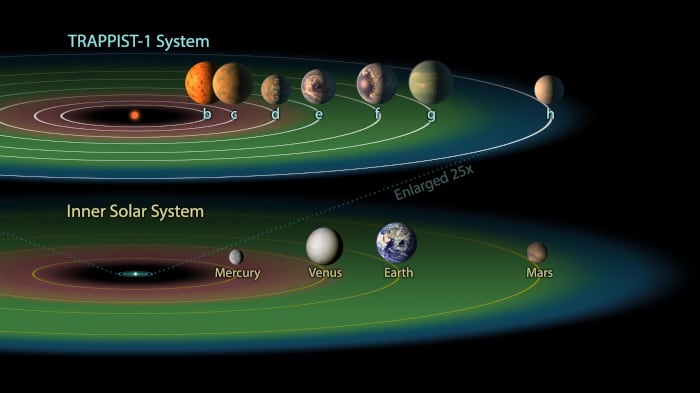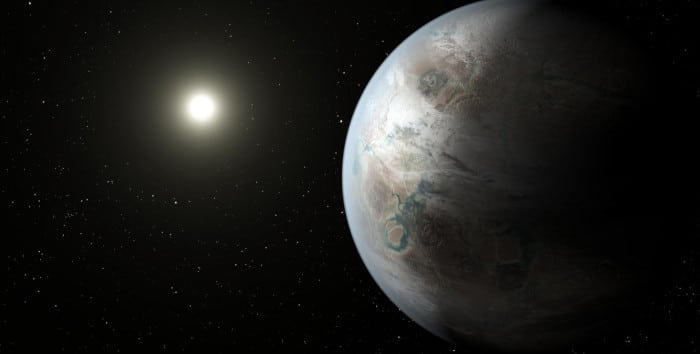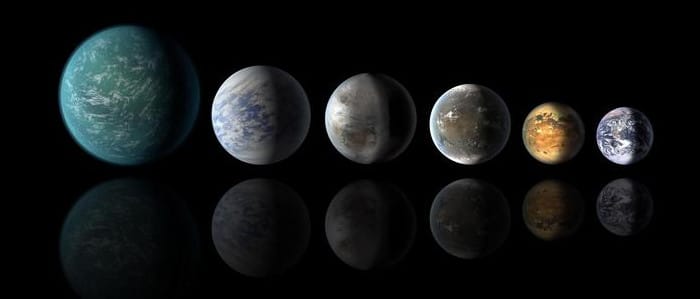As we discussed previously, we are going to start exploring planets besides Earth that are possibly habitable. In previous posts, we have described an Exoplanet and the different categories that help to define them. We will look closely at what criteria determine if a planet is habitable.
Requirement #1 – The Presence of Liquid Water
This criterion is pretty self-explanatory; we need water to sustain life.
But how do you determine if liquid water is available on a planet? That is where the Goldilocks Principle comes into play.
Concerning Astrobiology, this principle suggests that liquid water on a planet’s surface would make life possible on that planet. And for the world to have liquid water on the surface, it must sustain a specific temperature range.
This range, known as the Goldilocks Zone, dictates that the planet must be within a certain distance of its star for the perfect temperature range to be maintained. In our Solar System, the habitable zone spans the orbits from Venus to Mars, as shown in the comparison photo below.

Since Venus and Mars are said to be in the Goldilocks Zone, theoretically, they could each have surface water. Scientists believe that Venus had a shallow ocean on the surface billions of years ago.
Requirement #2 – Conditions Favorable for Complex Organic Molecules
Certain conditions must be met to allow for more complex organic molecules. The planet must have an atmosphere with free Oxygen, Carbon, and biologically available Nitrogen.
Surface temperatures between 5°F and 251.6°F are vital elements because it is essential to maintain a sustainable water source and for life to grow and reproduce.
Requirement #3 – Energy Sources to Sustain Metabolism
Lastly, an energy source is needed to feed the process of metabolism and growth. On Earth, we use Oxidation-Reduction (Redox) reactions which create energy through chemical reactions and reductions or light sources, also known as Photosynthesis.

What Is The Most Habitable Planet Besides Earth
There is no definitive answer to date, but there is speculation about Mars and several other candidates that NASA and others are investigating. As of April 2022, the candidate to be the most habitable planet besides Earth is said to be Kepler-452B.
Kepler-452 is very similar to our own Sun, and Kepler-452B is just a little over one and a half times the size of Earth, it is 1,400 light years away and orbits within Kepler-452’s Goldilocks Zone.

The Wrap Up
In conclusion, three criteria must be met before considering an Exoplanet a candidate for habitability. It needs an abundant liquid water source, an atmosphere favorable to complex organic molecules, and a metabolic energy source.
I hope to see you again next time as we continue to explore more Habitable Exoplanets.
This post contains affiliate links. Learn more and read our full disclosure policy here.
If you have any questions about Astro Explorations or if you have any comments that you would like to share, feel free to leave them down below and I will get back to you as soon as possible.
Disclosures & Policies
All Images Are Courtesy of NASA
References
Howell, E., & Harvey, A. (2022, April 22). The 10 most Earth-like exoplanets. Retrieved from Space .com: https://www.space.com/30172-six-most-earth-like-alien-planets.html
NASA. (2015, July 23). Planetary System Comparisons. Retrieved from NASA: images-assets.nasa.gov/image/PIA19826/PIA19826~orig.jpg
NASA. (2017, February 22). The TRAPPIST-1 Habitable Zone. Retrieved from NASA: https://images.nasa.gov/details-PIA21424
NASA. (2022, April 13). What is an Exoplanet. Retrieved from NASA: https://exoplanets.nasa.gov/what-is-an-exoplanet/overview/
National Geographic. (2022, May 19). Goldilocks Principle. Retrieved from National Geographic: https://education.nationalgeographic.org/resource/goldilocks-principle

